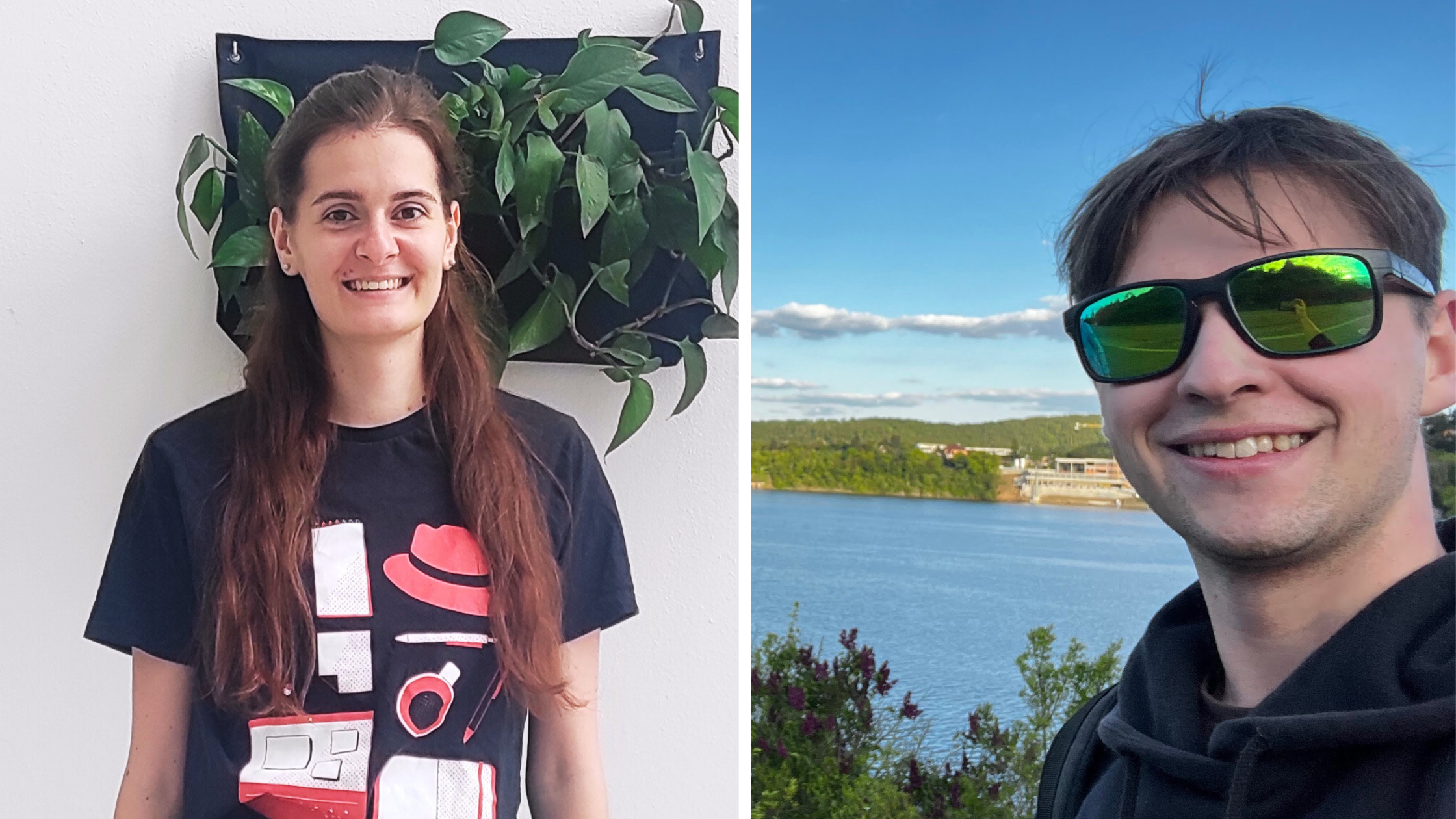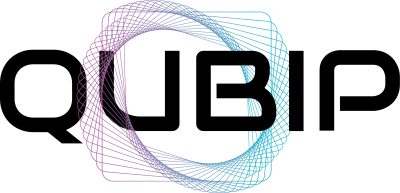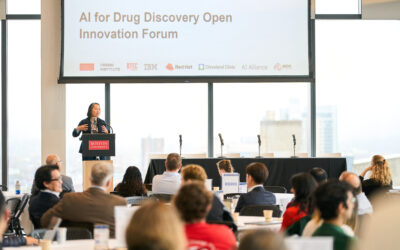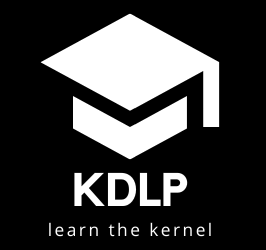University partnerships fuel the generation of new ideas and opportunities in open source research. In addition to developing research collaborations and assisting with student theses, the Red Hat Research team facilitates teaching opportunities for our engineers. Guest lectures and expert courses allow Red Hatters passionate about teaching to share their knowledge while helping universities include applied industrial material in their curricula.
This post spotlights two Red Hat interns who recently finished the Mastering Git course offered by Red Hat engineers at the Faculty of Informatics, Masaryk University (Brno), in cooperation with Red Hat Czech. Matej Buocik is an intern with the RHEL Upgrades Infrastructure team. Hana Oprchalova was an intern with the IT Development Enablement (ITDE) team.
What have you worked on at Red Hat?
Matej: During my now six-month-long internship with the RHEL Upgrades Infrastructure team, I have been primarily focused on the RHEL Upgradability Gating Test, which aims to guarantee a seamless upgrade experience for our customers when transitioning between major versions of Red Hat Enterprise Linux. We strive to eliminate any potential obstacles or issues that may arise during the upgrade process.
Hana: Most recently I worked on a data program for the ITDE team. I started my internship at Red Hat two years ago; however, it is not my first experience with Red Hat. During high school, I was lucky to get a high school internship and learn a lot from my mentors back then, Michaela Procházková (Jahůdková) and Adam Ormandy.
I first started in the Products and Technology ServiceNow team, and at the end of 2022 I moved to ITDE, where I needed to do far more coding and, therefore, work with Git. My Git skills were very basic, and working on projects with multiple contributors became hard for me. I found out about the Mastering Git course, which seemed like a great opportunity to improve my Git skills—and it definitely did.
What’s your proudest accomplishment at Red Hat?
Matej: I think it’s the personal growth I have experienced at Red Hat. Through my work and the challenges I’ve faced, I have developed a stronger sense of self-confidence and belief in my abilities to tackle any challenge that comes my way.
Hana: I consider my proudest accomplishment being able to bring value to my team. It is a great feeling when you start as a not-so-skilled person, then work hard, learn from others, become confident in what you do, and then see the actual impact of your work.
What made you interested in joining the Git course?
Matej: I had a very limited understanding of Git, so I was eager to learn more and enhance my Git skills beyond the basics. I wanted to gain the knowledge and skills necessary to manage code repositories efficiently, maintain a well-organized codebase, and collaborate seamlessly with other developers.
Hana: First, I was really glad this course was available at the Faculty of Informatics at Masaryk University, since there’s nothing like it in the regular curriculum. It was my long-term goal to learn to work with Git. You can always learn Git on your own from the internet, but when someone experienced is mentoring you and provides their materials (repos), tricks, and tips—and also you have some homework with a deadline—it helps. Moreover, this course came in really handy as it opened right when I started using Git during my Red Hat internship.
Can you describe your experience of the course?
Matej: The course spanned six weeks, and each week we delved into a specific theme or topic related to Git, for example, fixing mistakes, working as a team, or Git etiquette. Each lesson typically began with a theoretical part, covering the core concepts and principles relevant to the week’s theme. Then we followed with hands-on exercises and homework that allowed us to reinforce the concepts learned and apply them in practical scenarios.
Overall, my experience of the course was highly positive. The combination of theoretical lessons and practical exercises provided a great learning experience. The structured curriculum and weekly themes ensured a gradual and comprehensive progression, enabling me to build upon my knowledge and skills in Git.
Hana: Each week we tried out the Git features introduced in class on our own on prepared or newly created repos. The homework often combined new and previously introduced features, which was very useful in adopting Git habits. I really liked that when we were working in lectures, Irina and Tom (Irina Gulina, Senior Software Quality Engineer in RHEL for SAP Solutions, and Tomáš Tomaček, Senior Principle Software Engineer in Linux Integration Engineering) were always there to help, so we didn’t have to struggle when working on labs. I think the course was well structured and I’m confident in using Git now.
What knowledge, experience, or skills did you gain through the Git course?
Matej: I gained a strong foundation, knowledge, and practical skills in Git. This directly translated into my Red Hat interview success, as I was interviewing for a Red Hat internship shortly after completing the course. I was well prepared to answer Git-related questions. In fact, during the Mastering Git course, we covered every single question I was asked and almost all of the scenarios I’ve encountered during my work at Red Hat.
Hana: As I knew only Git basics like Git add/commit/push at the beginning, the course expanded my Git skills a lot. We learned branching, working with repos with multiple contributors, Git etiquette, fixing mistakes, and more. Working on multiple repositories, switching among branches, or updating my local work with commits from other contributors are among my most used skills learned in the Git course. I also understand a variety of Git commands and know when to use them when working on more advanced levels of Git usage.
What did you like about the Git course the most?
Matej: The course had a great theory-to-practice ratio, ensuring that I not only understood the concepts but also gained practical skills that I could immediately apply. I loved the clear explanations and visuals that helped me understand how Git works as well as the hands-on exercises that simulated real-world scenarios and allowed me to apply the knowledge gained from the lectures in a practical setting.
The course had a great theory-to-practice ratio, ensuring that I not only understood the concepts but also gained practical skills that I could immediately apply.
Irina and Tomaš are great teachers with the ability to demystify Git and break down complex concepts into digestible and practical explanations, making them easy to grasp. They encouraged questions and discussions, making learning feel natural and intuitive.
Hana: I liked the structure of the lessons in combination with the homework. The lessons made great explanatory background, and the practice in separated labs and the homework contained more complex tasks to test the lessons’ topics. This makes you experience the topic and therefore learn it with great understanding. This approach suited me a lot and even now, nine months later, I can recall Git features I haven’t used since the course.
How did the Red Hat Git course differ from other university courses?
Matej: It differed with its clear practical-oriented approach, which I really enjoyed, and also in length, as it went for half a semester.
Hana: The course was oriented on the practical usage of one tool, whereas other university courses focus on theoretical concepts. Also, the course ended in the middle of the semester, which I think was very welcomed by all the students as the end of the semester is usually busy.
Do you use Git nowadays?
Matej: Absolutely! Git has become an integral part of my daily workflow, and I confidently utilize it in my projects.
Hana: I conveniently use Git every day for projects in my internship. And I got used to storing all of my code from university and other projects on Git. Before the course, I was not using any version control system (shame on me).
Do you recommend the Git course to other students?
Matej: 1000% percent recommend it to everyone! Git is a must-have in today’s collaborative software development environment, and this course gave me solid foundations of Git and significantly enhanced my skills and confidence as a Git user.
Hana: I would totally recommend the course. I think every IT person will come across Git sooner or later. The course provides an excellent opportunity to learn Git under skilled mentors. And it’s definitely more enjoyable than learning it on your own.
What advice would you give to a new Red Hat intern?
Matej: When you don’t understand something, or just want to ask, ask. Believe in yourself and your contributions and have the courage to take on challenges. Future you will thank you!
Hana: Grab every opportunity to learn, as Red Hat provides a wide set of them. Don’t be afraid to ask—everybody is a beginner at some time. And don’t forget to have fun!
To learn more about the Mastering Git course, visit its GitLab page. To find out more about serving as a mentor or teaching engineer, email research-brno@redhat.com.









